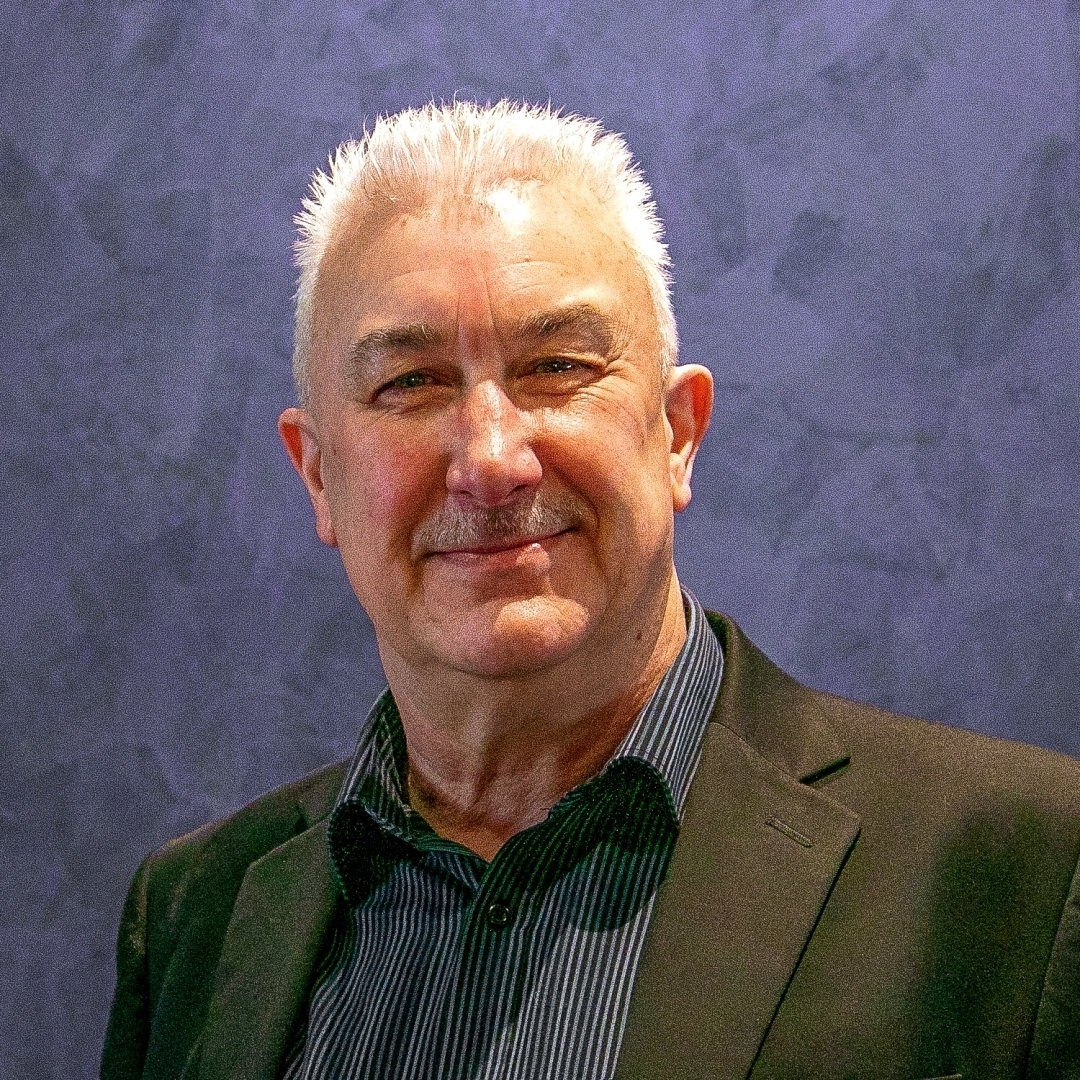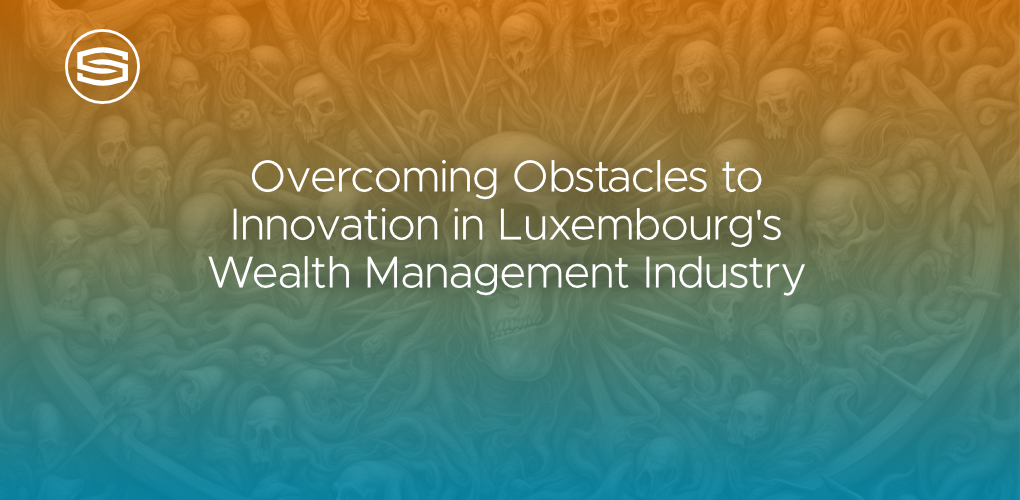
Insights & Opinions
Overcoming Obstacles to Innovation in Luxembourg’s Wealth Management Industry
Mon, 11 Nov 2024


Fostering innovation and driving transformation often feels like navigating a maze of obstacles, where each twist and turn reveals new barriers. At a recent roundtable dinner held in Luxembourg in collaboration with our partner Backbase, we gathered a small group of industry leaders to share insights on the structural, cultural, and psychological hurdles they face in embracing change.
The conversation was stimulated by a unique “game” that saw the guests bring their challenges to life as “Monsters & Myths” (particularly appropriate since it was Halloween evening), which highlighted a set of challenges that prevented them from fully capitalising on their innovative potential.
From cultural inertia and “Doomsday Prophets,” the discussion framed these issues as larger-than-life barriers that leaders must either confront or navigate around by applying “Magic” (suggested approaches to the problems from those around the table). Here are a small selection of the monsters identified, each representing a persistent challenge to progress.
 The Doomsday Prophets
The Doomsday Prophets
The Doomsday Prophets
These monsters arise in the very early stages of idea generation and try to prevent anything from ever happening by loudly stating: “We tried it before, and it failed, so don’t bother as it will fail again”. One suggestion was to navigate around these people by never involving them until a project was already underway (and hope like crazy that they don’t get any wind of it beforehand). Another way suggested to attempt overcome these Prophets of Doom, is to highlight what has changed since something was last tried, thereby demonstrating why the likelihood of success this time around is higher.
The Blind King
This is almost the opposite of the Doomsday Prophet. The Blind King is often a c-suite or senior management individual who makes decisions according to their own beliefs without considering the advice or opinion of their subject matter experts. This is a particularly difficult monster to defeat and the only suggestion is to confront them with facts – although this admittedly may not work due to their own personal conviction that they are right. (If you, dear reader, have any suggestions on the magic that is effective against this monster, please do share your thoughts in the comments!).
The Money Vacuum
This monster emerges when there’s an overwhelming fear that funds allocated to innovation will be wasted, often leading to hyper-cautious spending. Paradoxically, this cautiousness often results in more money being spent than necessary as projects proceed in small, incremental steps without a clear financial strategy. Participants suggested that structured budgeting, coupled with risk-tolerant leadership, could help mitigate this challenge. Gamification of spending habits, where teams are rewarded for completing projects under budget, was also offered as a potential solution to counter the vacuum’s drain.
 The Wisp of Nivens Mc Twisp
The Wisp of Nivens Mc Twisp
The Wisp of Nivens Mc Twisp
Mentioned by different names like “The Time Trap”, the “Have No Resources”, and the “No Time Soaker”, by multiple diners, one guest consolidated everyone’s thinking by characterising this monster as a demented version of the white rabbit from Alice in Wonderland (Nivens Mc Twisp). This monster symbolises the constant pressure of day-to-day responsibilities that leave little room for forward-thinking projects.
People are often overwhelmed by operational tasks, making it difficult to devote time to innovation, or at least they say they have no time to devote to it. One solution has been to establish transformation teams that operate independently of regular departments, but sustaining these initiatives requires significant resources and consistent energy. A compelling insight shared was the need for more structured “innovation time,” where people can step away from their day-to-day roles to engage in strategic problem-solving.
This monster shared many similarities with:
The Shackles of Business as Usual
The constraints of day-to-day operations, or “business as usual,” often prevent teams from considering innovative approaches. Colleagues find themselves ensnared by routine tasks and familiar processes, making it difficult to explore new, potentially more efficient ways of working. This monster feeds on the belief that innovation is a luxury rather than a necessity. It was also noted that sometimes, colleagues fear that engaging in innovative initiatives might lead to the impression that they have more resources in their department than they need. Many participants noted that fostering a “learning organisation” mindset—where adaptation and experimentation are embedded in everyday routines—could help break these shackles.
The Fonctionnaire Yeti (The Public Servant)
Pretty much the entire table laughed out loud when this monster was exposed – mainly because we could all immediately recognise the type of employee behaviour that it represents! This monster refers to a layer of middle management that often stands resistant to change. These managers, typically entrenched in the status quo, have zero ambition or enthusiasm to change anything and can stifle innovative ideas. Despite the top-down support for innovation from upper management and enthusiasm from junior staff, the middle management’s reluctance frequently prevents transformation efforts from gaining momentum. One particularly bold approach to combating this monster was taken by a CEO who let go of resistant middle managers to send a clear message that inertia would not be tolerated. However, this approach requires considerable risk tolerance and may not be feasible for all organisations. One creative suggestion was to actually make these people responsible for change!
Strategies for Overcoming the Monsters
The discussion generated several ideas for confronting these monsters and nurturing a more innovation-friendly environment within Luxembourg’s wealth management sector.
- Empowering Change Leadership- Participants highlighted the importance of distinguishing between change management and change leadership. While change management deals with the logistical aspects of transformation, change leadership focuses on inspiring and guiding teams through the innovation journey. Effective change leadership involves not only explaining the “what” and “how” of change but also the “why,” giving teams a clear vision and purpose for their efforts.
- Adopting Agile Mindsets - Agile methodologies offer a framework for tackling the “money vacuum” and “business as usual” monsters. Agile’s iterative approach, with its emphasis on breaking down projects into manageable phases, can help teams maintain momentum while adapting to shifting circumstances. However, the agile approach must be tailored to the organisational culture. For example, companies can establish cross-functional teams that allow business and IT departments to collaborate closely, thereby bridging the gap between innovative concepts and practical implementation.
- Creating Recognition Programs - Recognition emerged as a powerful tool for reinforcing positive behaviour and fostering a culture of innovation. Companies like Amazon employ “badges” to recognise employees who contribute ideas, instilling a sense of accomplishment and encouraging participation in future initiatives. Participants noted that publicly acknowledging employees’ contributions can have a ripple effect, inspiring others to engage in innovative thinking. In a more structured format, some organisations introduce competition-style events where teams present their ideas to a panel of judges, with the winning teams receiving awards or formal recognition.
- Role Modelling by Top Management - To overcome the resistance of the frozen middle, senior leaders must embody the values of innovation. Role modelling is a crucial element in driving cultural change; leaders who embrace new ideas and approaches create a more conducive environment for innovation. For instance, by visibly engaging in training sessions or using new tools themselves, leaders send a clear message that adaptation and learning are priorities for everyone in the organisation.
- Implementing Incremental Improvement Programs - Some participants shared examples from Japanese automotive companies, where continuous incremental improvement (known as kaizen) is a core part of the culture. Employees regularly propose small changes to enhance processes, which are then implemented and tracked. While this approach may not be ideal for disruptive innovation, it fosters a mindset of constant improvement, making organisations more adaptable to change over time.
The Path Forward: Building a Resilient Innovation Culture
One of the session’s major takeaways was the importance of creating a resilient innovation culture. Luxembourg’s wealth management firms are subject to evolving regulations and client expectations, necessitating a robust approach to change. To build resilience, organisations should focus on cultivating a culture of curiosity and continuous learning.
This cultural shift requires a balance between strategic planning and flexibility. Companies should set clear objectives for innovation while remaining open to change. As the conversation demonstrated, wealth management professionals often encounter the same barriers across firms. Sharing these experiences and solutions within the industry could lead to more cohesive approaches to overcoming the obstacles to innovation.
Conclusion
The roundtable discussion underscored that innovation in Luxembourg’s wealth management sector is a journey fraught with challenges. However, by identifying the monsters that stand in the way and developing targeted strategies, firms can create an environment that fosters creative thinking and adaptability. Addressing issues requires concerted effort and an openness to change, but with the right leadership and culture, these obstacles can be surmounted.
As Luxembourg’s wealth management industry looks to the future, embracing a mindset of continuous adaptation and fostering a resilient innovation culture will be crucial in staying competitive and meeting the evolving needs of clients. With leadership that prioritises people as much as processes, firms can transform these monsters into stepping stones on the path to innovation.
Join us at The Banking Scene Conference 25 Luxembourg on January 28, 2025 where we will be exploring "A Banking Metamorphosis", with insights shared on "Patterns of Success in Fintech & Digital Transformation", "Best Practices in Innovation to Drive the Metamorphosis in Banking", "The Banking Metamorphosis in Private and Wealth Banking" and more!